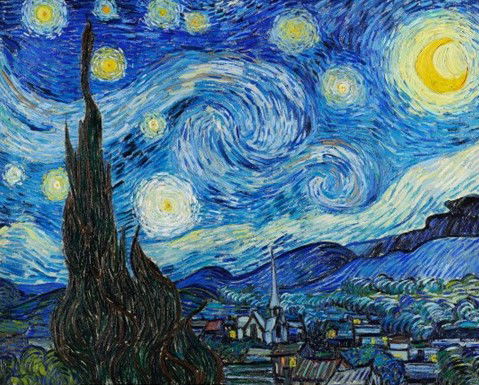Is It Art or Just Music?

You may have heard that “Beauty is in the eye of the beholder”. Would that mean that the beholder possesses the objective standard by which beauty is measured? Or does that mean that there is no objective standard by which beauty is measured? Can there be – should there be – is there an objective standard by which we can measure beauty, and in so doing, determine whether it’s art or just a craft?
The ”Beauty is in the eye of the beholder” saying may have been invented to save the feelings of an aspiring, though not yet competent, artist. A truer way to convey the intention of the saying might be “Preference is in the eye of the beholder”. Just because someone likes a painting or sculpture, doesn’t mean that it’s art, or beautiful.
The same standard applies to music. Back in the 1960s, there was a TV show that showcased new bands and singers. The band would perform for a live audience that would often dance to the music. Then, the host would ask some of the audience if they thought it was a good song. The stock positive answer became, “Yeah, man. It’s got a great beat and I can dance to it”. Did that answer mean that it really was good music? No, it indicated that people liked it.
So, how do we answer the question, “Is it Art or just Music”? In order for any creative work, whether musical, visual, theatrical, etc., to be art, it must meet some standards. If you were to hire musicians for an event like your wedding, or a corporate Christmas party, would you settle for volunteers from the local high school? If you would, you would either have an extremely exceptional high school or very low standards. It wouldn’t matter if the high schoolers were the best in the state, they wouldn’t be professional. Their abilities and standards wouldn’t be high enough for such an important occasion.
As I searched for a good definition of music, I found that all the sources agreed that music is organized sound. However, included in most definitions was the word “art”, which is a fundamental mistake in their definitions. They used the word “art” without a clear definition of what art is.
That’s because people in general, and philosophers, artists, musicians and intellectuals of all sorts have been debating the meaning of art for centuries. An extremely distilled version of most of their views is this: art combines Beauty and Power (or strength). Artful Music has those two things, Beauty and Power.
Now, in order to have an objective basis for the definitions of Beauty and of Power, we need to find a source of objectivity. The most verifiable source of such objectivity is God and the way He has revealed Himself.

When you think of nature, what comes to mind? Maybe a scene like this. What do you notice? Huge, majestic mountains. Soft, colorful flowers. Power in the sight of the mountains; Beauty in the sight of the flowers. If you were to ask a thug or a grouch, in a quiet moment, to be honest about a scene such as this, even they would have to admit that there is, indeed, beauty and power in this scene. And although I do not put a lot of stock in emotions as a guide for making decisions, emotions are usually an honest response to an experience. What kind of emotions would a scene like this evoke? Appreciation, gratitude, comfort, even love?
In nature, we can describe things as beautiful and/or powerful (art) or as ugly and/or weak (not art)? The scene above would be art. We are repulsed when we see a lioness tear a wildebeest apart. It’s just a natural process that God has had to allow; it wasn’t part of the original plan. So, that is nature, but not the art of nature. A blue jay or chickadee sings a sweet song. That would be art. A murder of crows chasing a screech owl would not be art.
Now, what do the words Beauty and Power mean? To put it simply, Beauty is an objective term, it doesn’t reside in the eye of the beholder. Something that is beautiful conveys a positive sense of pleasure or satisfaction to the beholder / listener. Power is a bit simpler. It infers the ability to do things that others can’t do. We must also limit this power to positive uses, and not misuses such as bullying or senseless destruction. But, how can we define “positive”? For a good definition of positive, Philippians 4:8 presents a great list of positive attributes (whatever is, true, honest, just, pure, etc.)

This play between beauty and power is best played out as conflict and resolution. Think of a roller coaster. There’s the long climb to the top, the first dive, a few more ups and downs and maybe a loop. But there’s always the smooth, slow, level ending. It’s the same with music, visual art, even movies. If the roller coaster was basically flat, it’s no fun. If there were too many sharp ups and downs and turns, it would be too painful too enjoy.
So, as God reveals Himself in nature that way, we can take our hints from there. It’s easier to describe what make good visual art than what makes good musical art, but I’ll try.
Before a song presents those elements, it must first present a “base” from which the listener can be led to the better elements. This is the “Once upon a time…” part of the song. The melody and accompaniment would establish a key and rhythm center. A song that starts out with ascending chords by half-steps using no clear rhythmic pattern is like tossing the listener, blindfolded, into a clothes dryer. There would be no way to tell which way was up or out. Even the best jazz, which can be very complex, starts with an aural basis for its listeners.
Now, let’s look at what makes a beautiful passage of music. A sudden view of extreme beauty tends to take the viewer’s breath away because it breaks in on the mundane view of just a second ago. So, too, a melody that starts simple and low and then “soars”. A good example of this is the arrangement in the SCC website of The Call by Regina Spektor from the movie Prince Caspian. The melody itself kind of wobbles around a couple of notes before it soars an octave. This happens twice. Then, the melody and chords start a longer climb, also getting louder as it goes. In the end, it all settles down nicely. The melody took some nice leaps; it got definitely louder and softer.
But it wasn’t all beauty, was it? Part of the power was in the soaring parts of the melody. The other was in the chord progression. The first eight measures used what’s called an inverted pedal point in which a note is sustained through the changing of the chords. In this instance, it starts on a B-flat with a B-flat as the top note in the chord. Then it moves to an F suspend-4. (There are 3 types of suspensions. A good musician designates which one is being used. There is also a suspend-2 and suspend-6.) Then to a G minor and an E-flat. All those chords have the B-flat as the top note, which sets up a sense of continuity, something for the listener’s ear to hang on to. In the part with the long climb, the F chord isn’t suspended. That resolution “completes” the sound for the listener and provides a sense of stability (power).
There are a few more things that occur in the song that make it beautiful and powerful. One thing to note, there’s an instrumental B section (bridge) that separates the vocal parts of the song. The first time through the vocal part, you’ll hear that inverted pedal point. The second time through, it’s not there. Remember tension and release. This is a larger way of presenting the release to the tension in the first part.
Another thing that you’ll notice is that the last note of the melody the first time around is a high B-flat. The very last note of the song is a low B-flat. That’s another way of expressing release.
The final thing to mention for now is the change-up in the chord progression. The progression in the first 8 measures is I-V-vi-IV (In the key of G, that would be G-D-Em-C). It’s a very common progression. BUT, the writer, using the same 4 chords, in the rest of the song, rearranges them in such a way that it creates even more tension and a bigger release. The main four-measure phrase there is V-I-vi-IV (D-G-Em-C). There are a few more chord changes, well done by using the same four chords! Far too many song writers find a really good progression and use it for the entire song. That reduces what might have been art to a simple, often boring song.
So, is it art or just music? To sum it all up, all art, including musical art, must have those attributes that evoke a positive emotional response, even a positive intellectual response. To embody those positive qualities, art must consist of a judicious balance of beauty and power. And those qualities of beauty and power must be derived from that objective Source.
Salt Cellar Creations understands the beauty and power that good musical art can convey and has a growing library of original works and arrangements with those qualities. Explore the offerings HERE.
SCC can also compose an original piece for you or do a custom arrangement for you. There are two ways that this can be done; one is much more affordable than the other. And SCC is always looking for ideas of pieces to arrange or suggestions for original pieces.
We have sold music not only in the US but in Canada, the United Kingdom, France, Australia, and New Zealand. Please visit the WEBSITE or CONTACT US to let us know what we can do for you!